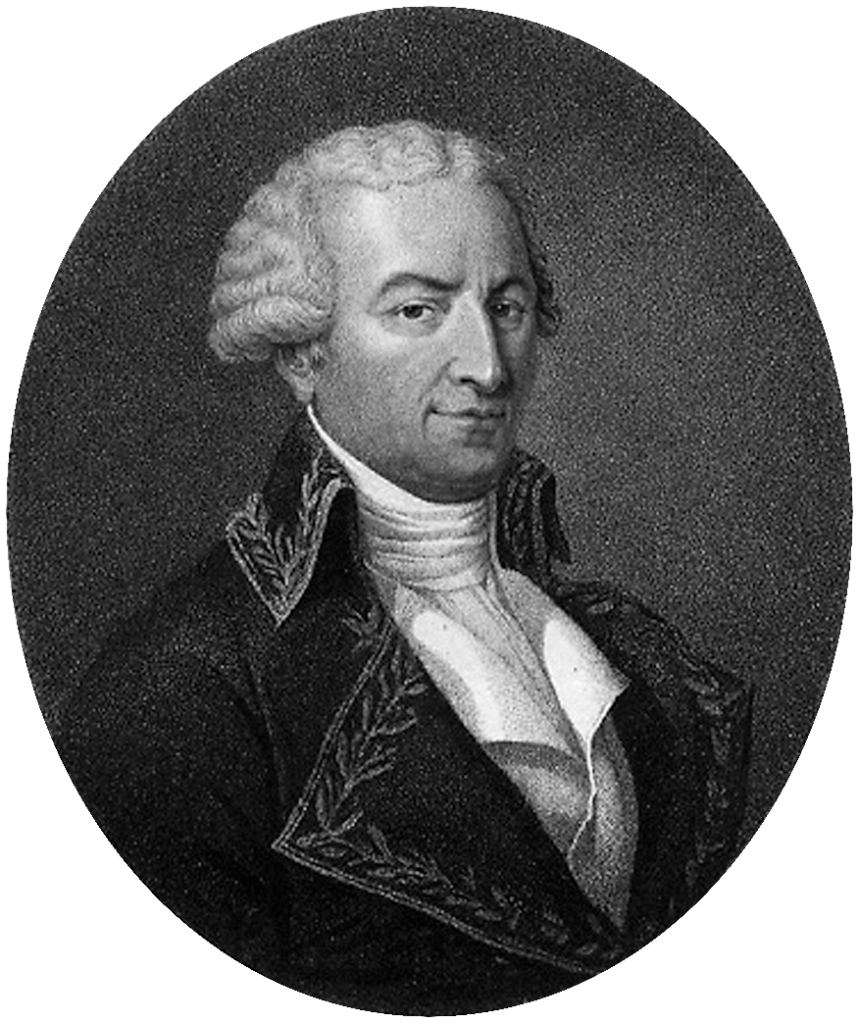In this series of posts (1,2) on the Portuguese botanist and diplomat José Correa da Serra, it’s time to examine the years he spent in France. By the end of 1801 he decided that the new Portuguese ambassador to Britain with whom he didn’t agree politically, was making his life so unpleasant in London that Paris seemed to provide a more welcoming atmosphere. Through his wide correspondence, he already knew such key botanical French figures as Antoine-Laurent de Jussieu and Augustin Pyramus de Candolle. Soon after his arrival, he was ensconced in a scientific circle that included not only these botanists but also the zoologist Georges Cuvier and the explorer Alexander von Humboldt. It became common for the four to meet regularly at de Candolle’s home for discussions on plants, geography, and natural history in general. Apparently Correa had a friendly manner, was without pretension, and was knowledgeable on a broad range of topics, explaining why he seemed to fit into whatever milieu he encountered (Davis, 1955).
His ten years in Paris were his most scientifically productive period. He spent much time at the Jardin des Plantes, which was then the hub for French natural history and where Jussieu, de Candolle, and Cuvier all worked. It had an excellent herbarium that Correa took advantage of. It was in France that he wrote his work on citrus classification published in 1805, though he had been doing research on this family for some time. He used Jussieu’s natural classification system and introduced the idea of symmetry as an important element in classification.
As I mentioned in the first post in this series, after my initial introduction to Correa as a friend of Thomas Jefferson’s, he kept popping up in my reading in surprising places, including the plant morphologist Agnes Arber’s (1950) The Natural Philosophy of Plant Form. Quite some time ago, I had done research on Arber’s ideas on plant anatomy that were influenced by Wolfgang von Goethe’s Metamorphosis of Plants(1790). When I reread Arber’s book more recently, there was Correa, who hadn’t registered with me before. She introduces him in a chapter on Goethe’s idea of type as a general concept of a plant “from which the concepts of existing plant forms could be derived mentally” (p. 59.) She writes of Correa’s “very stormy” life as explaining his dearth of publications, but notes: “The little that he published was, however, of an original character, and disclosed luminous ideas” (p. 60).
Arber argues that de Candolle took from Correa the idea of a type, a plan underlying each group of plants. Correa called this symmetry and as he explained in an article on monocots and dicots, he meant by this the particular arrangement of the parts which results from their respective situation and their forms. De Candolle added that symmetry here means a general system of organization, a non-geometric regularity of organized bodies as a result of spatial repetition of forms. Correa presented these ideas in papers on seeds and fruits published in the annals of the Museum of Natural History in Paris. He based his work on careful observation, studying not only external anatomy but also doing dissections, especially of reproductive structures, using the facilities at the Jardin des Plantes. He argued that such comparative anatomical work was essential in answering questions in classification. He had also extensively studied the research of others, quoting from the literature in several languages. It must be noted that wherever he lived, Correa had access to fine botanical libraries. And though de Candolle wrote at one point scolding him that he was less assiduous in his work than he could be, he nonetheless contributed important observations to botanical conversations of the day.
Because of his diplomatic contacts, Correa traveled not only in scientific circles but in political ones as well. He knew the Marquis de Lafayette and Pierre Samuel du Pont de Nemours, who had served in King Louis XVI’s government and was involved in working out the terms of the 1783 Treaty of Paris that ended the American Revolutionary War. When the French Revolution began six years later, he emigrated with his family to the United States, where his son eventually founded the company that retains the family name today. Over the years Du Pont traveled back and forth between the two countries. It was probably through Lafayette and Dupont that Correa met American diplomats like David Warden and Joel Barlow. These individuals all supported Correa in his decision to leave France and move to the United States. This new exile was precipitated by Napoleon who was pressuring Correa to write glowingly of French science. As before, Correa chose to uproot himself rather than to soften his views.
Lafayette, Dupont, and Humboldt all provided Correa with letters of introduction to Thomas Jefferson, but it turned out that he didn’t even need them since his diplomatic contacts put him in touch with President James Madison, who in turn contacted Jefferson about the new arrival. But before traveling south, Correa set himself up in Philadelphia because at this point he knew enough about the country to realize that this was its intellectual center. It had the American Philosophical Society and its library, as well as the Academy of Natural Sciences. Politics could wait until he found his scientific footing, as will become clear in the next post.
References
Arber, A. R. (1950). The Natural Philosophy of Plant Form. Cambridge University Press.
Davis, R. B. (1955). The Abbé Correa in America, 1812-1820: The Contributions of the Diplomat and Natural Philosopher to the Foundations of Our National Life. Correspondence with Jefferson and Other Members of the American Philosophical Society and with Other Prominent Americans. Transactions of the American Philosophical Society, 45(2), 87–197. https://doi.org/10.2307/1005770
